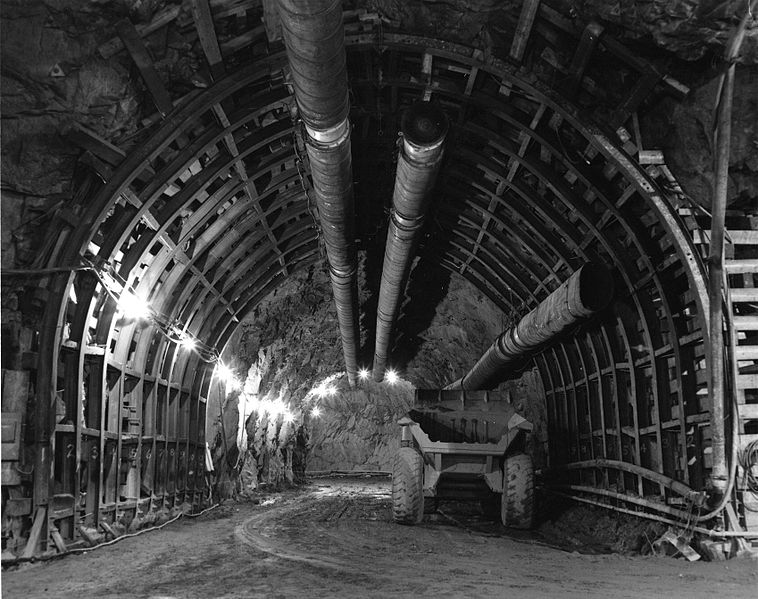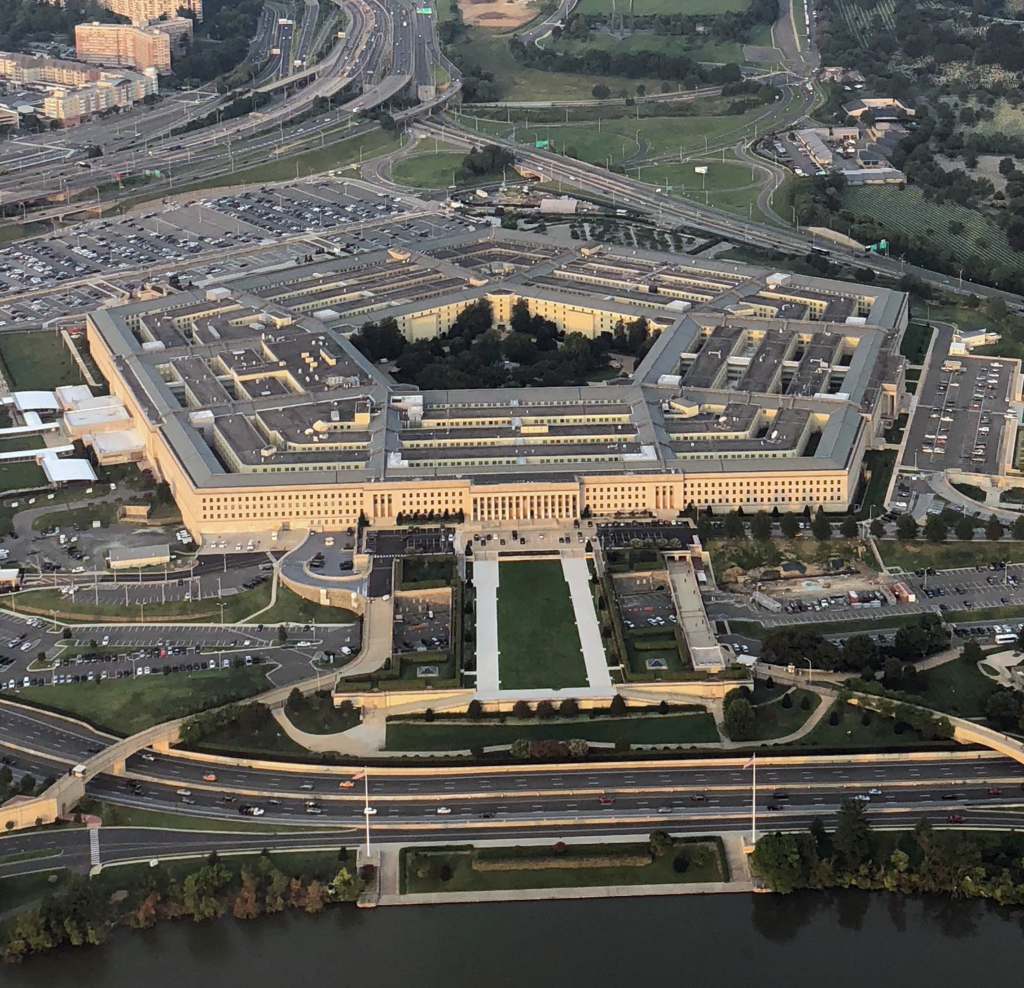
What’s referred to in obscure government documents as Raven Rock Mountain Complex is reported to hold several three-story office buildings. Don’t bother looking for them. They are inside the mountain, in enormous tunnels blasted out of granite 70 years ago when America was preparing for a potential nuclear attack.
In the hills of Southern Pennsylvania, not very far from Gettysburg, is a peculiar federal facility. Winding country roads suddenly come to an end at imposing gates with guard houses and fences topped with razor wire. Military police will approach any unexpected visitors and direct them to turn around.
The plan, first formulated in 1949, was that if the Pentagon was devastated by a Soviet strike, this “Underground Pentagon” would become America’s military headquarters. For decades it was constantly manned and always on alert for an attack which thankfully never came.
As Cold War fears subsided, the facility in Pennsylvania was starting to seem like an expensive relic. But with the 9/11 attacks the underground complex became important again. It was widely reported to be the “secure undisclosed location” where Vice President Dick Cheney lived and worked when he would disappear from public view in late 2001.

In the past two decades the importance of Raven Rock to America’s war planners only seems to have increased. By checking databases of federal contracts, it appears a lot of construction work is still going on. And it’s out of sight, deep under the granite.
Building an Underground Pentagon
The idea of an American military headquarters nestled underground has its roots in the darkest years of World War II. During Hitler’s aerial assault against Britain, Prime Minister Winston Churchill took cover in a headquarters facility which is now a tourist attraction under London.
With the Soviets racing to obtain a nuclear weapon in the late 1940s, the wisdom of housing the entire military leadership of the United States in one enormous building, the Pentagon, seemed questionable. The enormous structure across the Potomac River from Washington D.C, which had only opened a few years earlier, was easily identifiable from the air. It would be a gigantic and obvious first target in a nuclear attack on the U.S.
The military began thinking of building an alternate command headquarters, and the thinking naturally led under the earth. A site in Pennsylvania, practically straddling the border with Maryland, was selected.
It was only six miles from the presidential retreat (which became known as Camp David during the Eisenhower administration), and five miles from Fort Ritchie, a military installation that could serve as a supply and support base. The mountain, which was 65 miles from Washington, D.C., was unnamed, but a nearby rock formation was known locally as Raven Rock. The government took that name for the new installation, which would also be known by the code name Site R.
When the federal government started buying up land in the area in 1949 local people had been puzzled. Some farmers were told they could continue to farm tracts of land they’d sold. The feds only seemed interested in what was under the land.

The government hired a large construction firm, Parsons Brinckerhoff, which had extensive experience on massive projects including tunnels for the New York City subway and the Detroit-Windsor tunnel between the U.S. and Canada.
In early 1951 construction began at the site when bulldozers and other heavy equipment arrived. Within weeks work crews totalling 300 men were working around the clock. With the sound of granite being blasted and dozens of trucks dumping rock from the hold in a nearby ravine, there was no way to keep the work entirely secret. At first, curious residents were told the government was digging a mine.
Given the size of the endeavour and the number of workers involved a more plausible version of the story got around.
A Not Entirely Secret Project
Two months later, on May 14, 1952, another Associated Press story in the Washington Evening Star began: “Steel for the framework of a $7 million building inside a mountain is being moved up to the site of the Army’s big hush-hush communications project here.”
The brief article about the construction project, termed a “hidden Pentagon,” revealed some astounding details: “It calls for a building about 50 feet high inside a tunnel almost a mile long which was bored into Raven Rock Mountain…” Despite its revelations, the story was buried on page 23 of the newspaper’s B section, beside a small article about souvenirs that were being planned for Queen Elizabeth’s coronation the following year.

The Defense Department went very public announcing its new “Underground Pentagon” in February 1954. Another Associated Press article was published in American newspapers (including on the front page of the Washington Evening Star) announcing that the complex was ready for use. The article noted that the “alternate command post” had cost $35 million and contained a tunnel which was curved to “reduce blast pressure from an atomic explosion outside.” (A similar story appeared on page 2 of the New York Times.)
The article also mentioned that the tunnel contained a main chamber, said to be 35 feet high and containing three floor levels for the command post. Other noted details were an emergency power and water system and air filtering equipment to protect against “poison gas or germ warfare material.”
The story said the facility was in Frederick County, Maryland, though it’s actually across the state line in Pennsylvania. That may have been a simple reporting mistake, or perhaps a purposeful deception meant to send potential sightseers down the wrong winding roads.
Following the publication of that revealing article in early 1954, it seems officials in the Pentagon or the Eisenhower White House decided too much had been disclosed. The underground command post under a Pennsylvania mountain would be active and manned around the clock throughout the Cold War. Yet for nearly 50 years Raven Rock was seldom mentioned in the press.
Alternate Secret Shelters
It’s possible President Eisenhower evacuated to Raven Rock for three days in June 1955 during a massive Civil Defense exercise. The elaborate drills, dubbed “Operation Alert,” emptied government buildings in Washington. Employees in the Pentagon filed outside, as did workers at the State Department. Eisenhower walked out of the West Wing of the White House in front of news cameras, got into a limousine, and quickly departed from Washington.
During the exercise, which was designed to mimic a nuclear attack on major American cities, Eisenhower’s location was reported as “a mountainous wooded area.” That would certainly describe Raven Rock, though it’s possible the president had relocated to another site, in the mountains of Virginia.
At roughly the same time Raven Rock was being constructed another secret hideout, for the civilian leadership of the United States, was being built on land the government had owned for decades in rural Virginia about 50 miles west of Washington, D.C. It became known as Mount Weather, due to having been, among other things, a government meteorological station in the early 20th century.
Mount Weather was designed to shelter the president and other top officials of the executive branch, members of Congress, and even the justices of the Supreme Court. Over time extensive underground facilities were constructed. It has been reported that top Congressional leaders were flown to Mount Weather by helicopter in the hours following the 9/11 attacks.
Like Raven Rock, Mount Weather has maintained a deliberately low profile. It has been mentioned in works of fiction such as “The X-Files,” but the government has not provided much official information about it.
A third elaborate facility considered a vital part of America’s defence against a massive attack is the underground complex at Cheyenne Mountain Complex in Colorado. Work on the peak in the Rockies began in 1961, and it became operational in the late 1960s. For decades the enormous bunker dug out of granite has been the headquarters of the North American Air Defence Command, known as NORAD.
Other military agencies, including the Space Force, also use Cheyenne Mountain. The federal government obviously considers the heavily fortified bunker to be a highly secure location, but it has never been subjected to the pervasive secrecy shrouding Raven Rock and Mount Weather.
Raven Rock: Better Known Today, But Still Officially Secret
In the 1990s, when the Pentagon was downsizing and the Cold War seemed to have ended, the U.S. military announced it was scaling back its plans, known as “The Doomsday Project,” for surviving and fighting a nuclear war. An article detailing that in the New York Times on April 18, 1994 made a rare mention, at the time, of Raven Rock.

In the following years a few reporters visited the area of Raven Rock and talked to people who have lived on the country roads near the facility for decades. They tended not to say much.
There seems to be no record of the Underground Pentagon ever welcoming journalists, though a parody site on the web claims to offer “Raven Rock Mountain Complex – Site R” tours.
The Underground Pentagon Today
A few hints about current activity at Raven Rock can be gleaned by sifting through databases that list federal government contracts.
A “contract opportunity” posted in early February 2023 called for bids in the field of information technology associated with Raven Rock Mountain Complex. Other contracts have been utterly mundane. In 2019 the complex needed a supplier of rock salt, a vital material on local roads in winter.
The Department of Defense announces the awarding of major contracts, and in August 2022 it announced a large one for the U.S. Army: a $100 million contract awarded to a Washington area firm, Grunley Construction. The contract was for “design-bid-build construction support of the Raven Rock Mountain Complex.”
Grunley Construction’s website contains an impressive portfolio of projects, which include building and restoring federal office buildings and museums as well as the restoration of the Jefferson Memorial. A search of government databases reveals that the company has been doing other work at Raven Rock for years. And, as might be expected, a search on the company’s site for Raven Rock brings up no mention of the place.